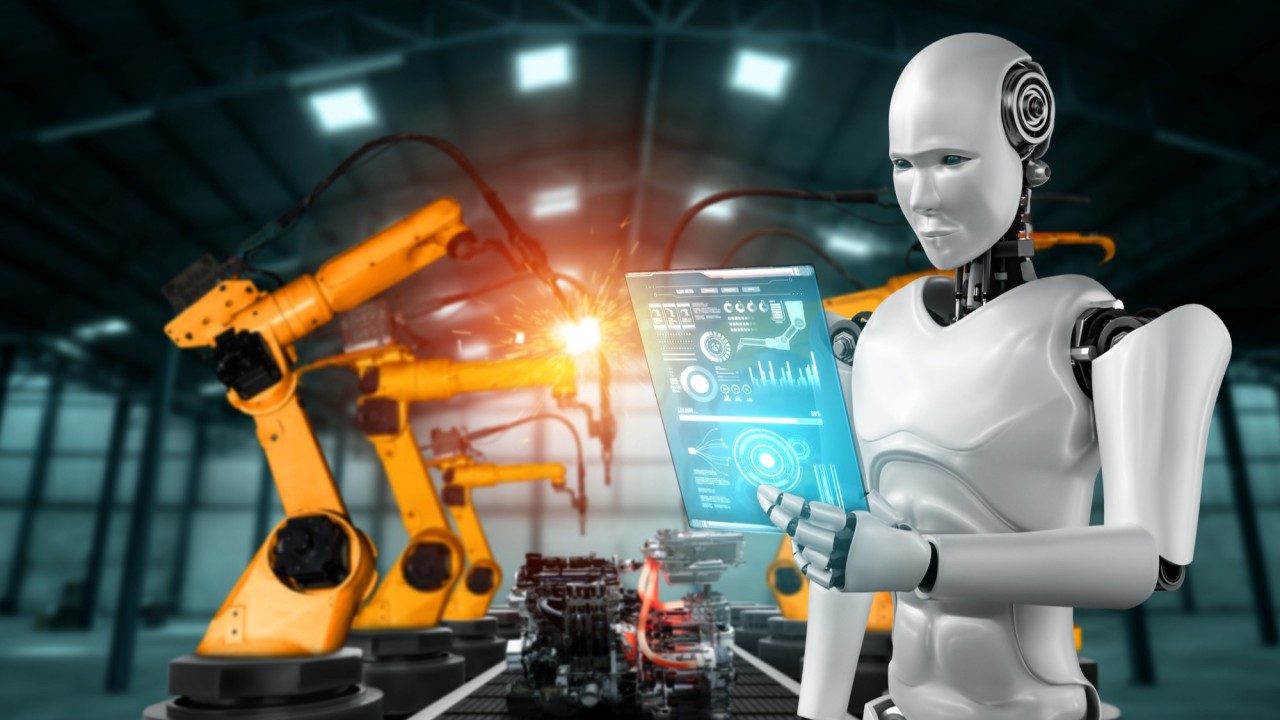This is happening more quickly than most of us can keep up. Artificial intelligence (AI) and robots are two of the main things that are making this happen. Once confined to sci-fi movies, these technologies now permeate everyday life. AI and robots are now essential to everything we do, from how we work and talk to how we shop and get medical care. As their power grows, it’s vital to know how they are changing our routines, expectations, and future.
AI is already a part of your daily life
AI is already a part of many parts of our daily lives, whether we are aware of it or not. AI is used when you ask a digital helper about the weather, get personalized shopping suggestions, or use your face to open your phone. To give you a personalized experience, algorithms look at your likes, dislikes, actions, and even facial features. It’s this subtle merging that makes AI so powerful—it doesn’t always feel like a big change, but it always makes things easier and faster.
Cities and homes that are smarter AI in charge
AI is also a big part of the growth of smart towns and homes. AI is now used in heaters, lighting systems, and home security cameras to learn how we use them. If you use a smart thermostat, it can learn your habits and change the temperature on its own to save energy. AI controls traffic in towns, keeps an eye on public safety cams, and helps people get the most out of their energy use. The goal of these systems is to make life better while also making settings more stable and easy to handle.
Work and business are changing because of robotics
In the past ten years, robotics has come a long way. Robots are used in industry to do exact, heavy, and dangerous jobs over and over again. This gives people more time to work on jobs that need imagination, decision-making, or emotional intelligence. Robots pick up, pack, and move goods all the time in stores. Robotic tools help farmers put seeds, keep an eye on crops, and gather crops.
Things are changing even in customer service. Robots meet customers, give them information, and bring them things in some shops and hotels. Many of these robots are simple, task-specific tools, not the lifelike robots from science fiction, but they’re having a big effect.
Using AI and robots in health care
Thanks to AI and robots, the healthcare business is going through a quiet change. AI algorithms can look at big sets of data faster than people can, which helps find diseases early and suggest treatments. Some AI systems can look at medical pictures, like MRIs or X-rays, and find signs of illness that even really good doctors might miss.
Robots are also used in surgeries because they can do very accurate work with very little damage to the patient. Robotic limbs and other assistance tech help disabled people live on their own more. Robotic helpers bring supplies to hospitals or clean rooms, which lowers the risk of getting an illness.
Changing How We Learn and Teach: AI is starting to change the way we learn by making it easier to get and more tailored to each student. AI-powered educational apps can change based on how and how fast a student learns, giving them personalized classes and feedback. AI tools can help teachers figure out where their students are having trouble and then change how they teach to help those students.
Robots are also making their way into schools. Robotic teaching aids or language teachers are used in some schools, especially in settings for kids with special needs or who are just starting to learn. These tools can help get kids interested in learning and make it more fun.
Using AI for fun and creativity
AI isn’t just about making things faster; it’s also becoming a partner in creativity. AI tools are being used by musicians, writers, and artists to come up with new ideas, make their work better, and even make completely new pieces of content. People are already interested in music, paintings, and short stories that were made by AI. These works blur the line between human and machine creativity.
When it comes to entertainment, platforms like Netflix and YouTube use AI to learn what you like and suggest others what you should watch next. Video games now have characters that are controlled by AI and change based on how you play. This makes the games more difficult and engaging.
What’s Going on with Personal Robots
Robotics for people is another area that is set to grow. There aren’t many robot butlers out there yet, but there are already robots that help clean, mow lawns, and be friends. Some robots are made to help older people with easy jobs around the house, like remembering to take their medications or calling for help in an emergency. As these gadgets get cheaper, more people will probably have them in their homes, especially older people.
Implications for Ethics and Society
It’s not always simple to deal with big changes, like the rise of AI and robots. A big worry is privacy, since AI systems often need to gather and analyze data about people. Another worry is job loss, especially in fields where robots can do the work of humans. Concerns have also been raised about AI making decisions in areas like healthcare, law enforcement, and finance, where mistakes or bias could have very bad results.
To address these issues, many experts advocate for responsible AI development, which involves ensuring that all systems are transparent, accountable, and overseen by humans. As these tools become more common, ethics, fairness, and rules will be more important.
The Way Things Will Be in the Future
In the future, AI and robots will only become a bigger part of our lives. On the roads, we might see cars that drive themselves, personal health coaches driven by AI, or home robots that help with child care. While it’s impossible to know everything that will happen, one thing is certain: AI and robotics are not passing fads; they are permanently and deeply changing the world.
People and groups can make better decisions, fight for fair use, and enjoy the benefits while reducing the risks if they know about and think about these changes. The future may be digital, but people will still be in charge of it.
Questions That Are Often Asked
Q1: How does AI already change the way I live?
A: Personalization on streaming services, voice helpers like Siri or Alexa, and spam filtering in your email are just a few of the ways that AI affects your daily life. Even the face detection on your phone is based on AI.
Q2: Are robots really taking over jobs that people used to do?
A: Robots are taking over some dangerous or repetitive jobs, mostly in the industrial and transportation industries. On the other hand, they are also making new jobs in areas like data analysis, writing AI, and maintaining robots.
Q3: Can AI be creative like people?
A: AI can make artistic things like music, art, and writing by studying patterns in other people’s work. It’s not really inspiring or emotional, but it’s becoming a powerful tool for people to be creative.
Q4: How dangerous is it to use AI and robots?
A: Privacy of data, job loss, biased algorithms, and relying too much on automation are some of the biggest worries. Making sure ethical design and human monitoring are in place is necessary to lower these risks.
Q5: How often will robots show up in your home?
A: Yes, personal robots that clean, care for, and be with you are already on the market. They are likely to become more popular as technology gets cheaper and easier to use.
Q6: What can I do to get ready for a future where AI and robots rule?
A: Learn how to use technology, stay interested in new tools, and get used to new technologies. In a world driven by technology, you will do well if you are open to change and know what the moral and social effects are.



